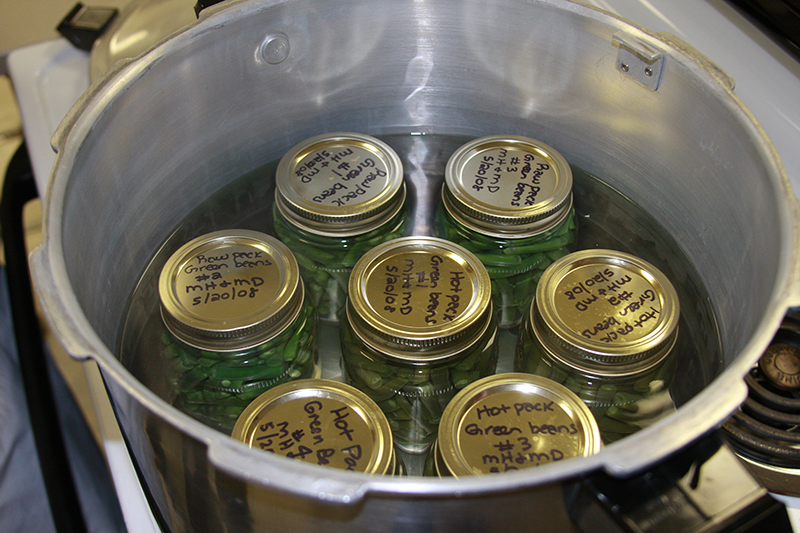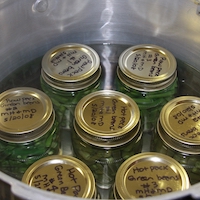Canning season is here and, even if you haven’t harvested your backyard tomatoes or okra yet, it’s time to get ready.
Before you begin canning, check your equipment and supplies. Your equipment should be in good, working condition to ensure that your canned goods will remain safe to eat after canning.
“Nothing’s worse than getting your fruit and veggies prepped and ready to can, then finding out you need more equipment or containers or you need to replace canner parts,” said Elizabeth Andress, author of the canning bible “So Easy to Preserve” and director of the National Center for Home Food Preservation at the University of Georgia. “A brief check of your tools before you begin to harvest will ensure you can you put up your harvest at its peak freshness.”
Check that canner.
If you’re canning low-acid vegetables, such as green beans, greens or okra, you’ll need a pressure canner.
Be sure to check a dial gauge for accuracy. Learn more by contacting your local UGA Extension office. If your canner has a rubber gasket, make sure the rubber is flexible and soft, not cracked, brittle or sticky. Also, make sure that any pipes and vent ports are clean and clear.
UGA Extension recommends avoiding electric multicookers. Instead, use standard stovetop pressure canners, which are made specifically for pressure canning.
For fruits, pickles, jellies and jams, use a boiling water canner. This type of canner should be deep enough to allow 1-2 inches of water to boil over the tops of your jars and should have a ventilated rack in the bottom to hold the jars.
Round up jars and lids.
Make sure your jars are free of any cracks, nicks or chips and be sure to check the top sealing edge as they can prevent lids from sealing properly.
Survey your jars to determine if you need to invest in new ones. Old jars weaken over time and can even shatter under heat and pressure. Therefore, investing in new jars is the wisest long-term investment.
The U.S. Department of Agriculture (USDA) recommends two-part self-sealing lids, and the flat lid should be replaced every year. Rings can be reused from year to year but need to be checked to ensure that they haven't corroded or warped.
Finally, make sure that your kitchen is ready and that you prewash your jars before you start processing your produce. Some procedures for jellies and pickles also call for sterilizing jars. The directions for each food will indicate whether sterilizing jars are necessary.
Your kitchen work surfaces should be clean and sanitary, as should all bowls, pots, pans, measuring cups and other tools. Move items that are unnecessary for your preserving activities out of the way. Safe, efficient preserving should be done without distractions or unrelated items in your way.
Prepare your freezer.
For many vegetables and fruits, freezing may be an easier option than canning your harvest.
If you plan on freezing, consider cleaning out your freezer now. You don’t want a half-empty box of forgotten waffles or years-old, freezer-burned meat taking up space that could be filled by fresh-packed, in-season strawberries.
Gather your containers. Plastic, zip-close bags are good options as are plastic containers or canning jars that are labeled as freezer-safe. Glass jars that were not manufactured for canning and cardboard milk cartons are not recommended.
Get trustworthy instructions.
Finally, make sure you have the most up-to-date canning instructions from UGA Cooperative Extension or USDA. Andress encourages caution when taking canning advice or recipes from friends or family and historical publications or websites.
Old canning practices have led to foodborne illnesses, such as botulism, in the past.
A copy of the most recent UGA Extension instructions and many research-based food preservation techniques and recipes can be found at the National Center for Home Food Preservation website, managed by UGA Extension, at http://nchfp.uga.edu.








